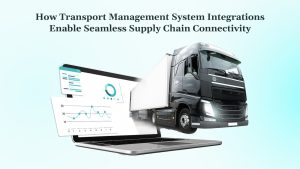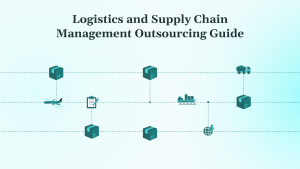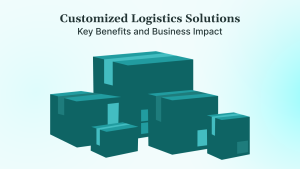Efficiently managing logistics is crucial for businesses to maintain their competitive edge. The movement of goods across various transportation channels is a complex process that requires optimizing routes, implementing real-time tracking, and managing costs effectively. This is where Transportation Management Systems (TMS) come into play.
A Transportation Management System is a software solution designed to help businesses plan, execute, and optimize the movement of goods and materials. It also takes care of various modes of transportation, including road, rail, sea, and air.
It is a key component of a company’s Supply Chain Management (SCM) system. By utilizing TMS software, businesses can streamline their operations.
However, off-the-shelf TMS solutions may not be suitable for all businesses. Particularly those with unique logistics requirements or industries subject to specific regulations. This is where the best transportation management systems become crucial.
Key Takeaways
- A Transportation Management System (TMS) automates logistics, improving route planning and shipment tracking.
- Custom TMS solutions are tailored to meet industry-specific needs, ensuring better compliance and scalability.
- TMS enhances integration with existing systems, such as ERP and CRM, streamlining operations across departments.
- Real-time data and predictive analytics enable businesses to make informed decisions and optimize their logistics.
- Custom TMS solutions enhance customer satisfaction by delivering real-time updates and expedited deliveries.
- A well-designed TMS can significantly reduce operational costs and improve efficiency.
What is a Transportation Management System (TMS)?
A Transportation Management System (TMS) is a software platform that allows businesses to plan and execute transportation logistics more efficiently. It helps streamline the transportation process by automating manual tasks, enhancing operational visibility, and improving the overall supply chain efficiency.
At a high level, the primary functions of a TMS include:
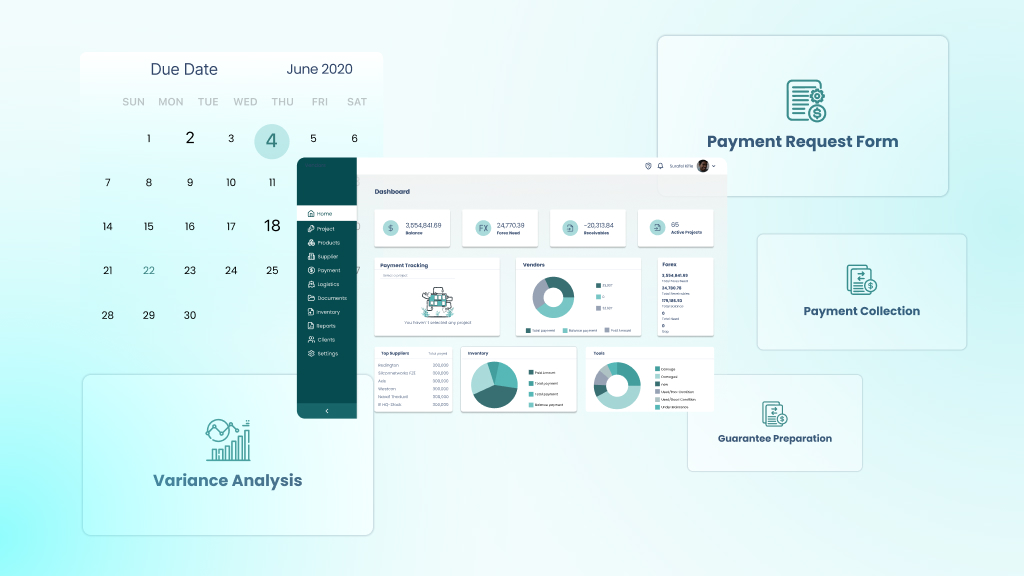
- Route Planning and Optimization: TMS software helps companies determine the most efficient routes for delivery. It takes into account factors such as distance, fuel costs, traffic, and weather.
- Shipment Tracking: One of the most critical transport management system features, enabling businesses and customers to track the real-time status of shipments.
- Carrier Management: Manages relationships with various transportation carriers. You can select the best service providers to meet your needs.
- Freight Payment: Automates the payment process. You only pay for the services you use.
- Reporting and Analytics: Provides detailed metrics on transportation costs, delivery performance, and other important KPIs.
TMS solutions can drastically improve the visibility of logistics operations and reduce costs.
Also Read: Customized Logistics Solutions: Key Benefits and Business Impact
Why the Best Transportation Management Systems are Vital for Business Success
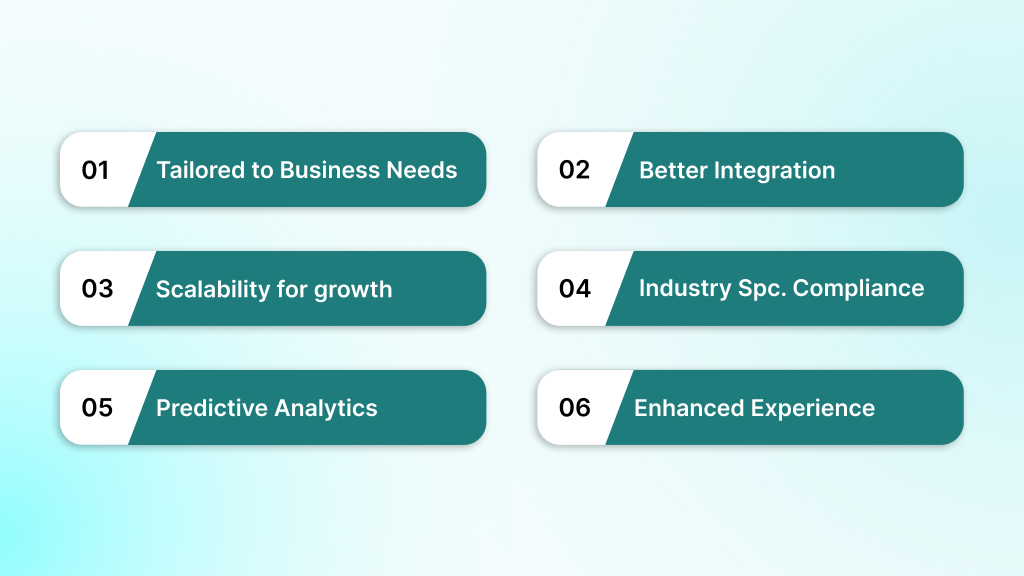
While off-the-shelf TMS solutions offer a basic level of functionality, they often fail to meet the specific needs of businesses. These industries require the best transportation management systems to address their unique challenges.
Here are the reasons why custom TMS solutions are vital for business success:
1. Tailored to Your Business Needs
A custom TMS is specifically designed to meet the unique requirements of your business. Whether you need to integrate compliance features for HealthTech or manage complex financial transactions in FinTech, a custom solution allows you to:
- Address industry-specific challenges: Custom TMS solutions are built with your exact requirements in mind. For example, HealthTech companies that deal with temperature-sensitive medical shipments will require a temperature tracking feature. FinTech companies may need to ensure secure financial data management during transportation.
- Optimize workflows: Tailored solutions ensure that your TMS integrates seamlessly with your current processes and technology stack.
2. Better Integration with Existing Systems
Many businesses already have a suite of enterprise systems in place, such as ERP, CRM, or Warehouse Management Systems (WMS). Off-the-shelf TMS solutions may not integrate smoothly with these existing platforms. This could lead to data silos and inefficiencies.
A custom TMS can be built to integrate seamlessly with your business’s existing systems. You get a holistic solution that streamlines operations across all departments.
3. Scalability for Long-Term Growth
As your business grows, so do your logistics needs. A custom TMS solution is designed with scalability in mind. You can handle increased data volumes, new geographic regions, and more complex business operations over time.
Unlike off-the-shelf software, which can become outdated or insufficient as your company grows, a custom-built TMS ensures that your system evolves in tandem with your business.
4. Industry-Specific Compliance and Regulatory Features
Businesses often have strict regulatory requirements that need to be integrated into their logistics operations. A custom TMS allows you to incorporate industry-specific compliance features, such as:
- HIPAA compliance for HealthTech companies that manage sensitive patient data.
- GDPR compliance for businesses in FinTech handling customer financial data.
With a custom solution, you can ensure that all aspects of your transportation process align with regulatory requirements. This reduces the risk of non-compliance and associated penalties.
5. Real-Time Data and Predictive Analytics
The best transportation management systems offer the capability to integrate real-time data and predictive analytics, enabling more informed decision-making. You can:
- Track shipments in real-time: Provides visibility into your supply chain and enables proactive action in the event of delays or disruptions.
- Predictive models: Forecast demand, plan routes, and anticipate supply chain issues before they become problems.
For example, in Logistics, you can incorporate machine learning algorithms to predict the optimal routes based on traffic patterns, historical delivery times, and current weather conditions, saving time and reducing transportation costs.
6. Enhanced Customer Experience
We know that customer experience is a critical differentiator. A custom TMS solution can help improve customer satisfaction by offering:
- On-demand visibility into shipment tracking, allowing customers to receive real-time updates on their deliveries.
- Automated notifications and alerts keep customers informed about any changes or delays in their shipments.
- Personalized services that allow businesses to offer faster, more accurate deliveries tailored to the customer’s specific needs.
By streamlining operations and enhancing communication, a custom TMS improves the overall customer experience. This results in higher retention rates and greater satisfaction.
Read more about Logistics Management Software Solutions.
Building, Implementing, and Maintaining a Custom TMS for Your Business
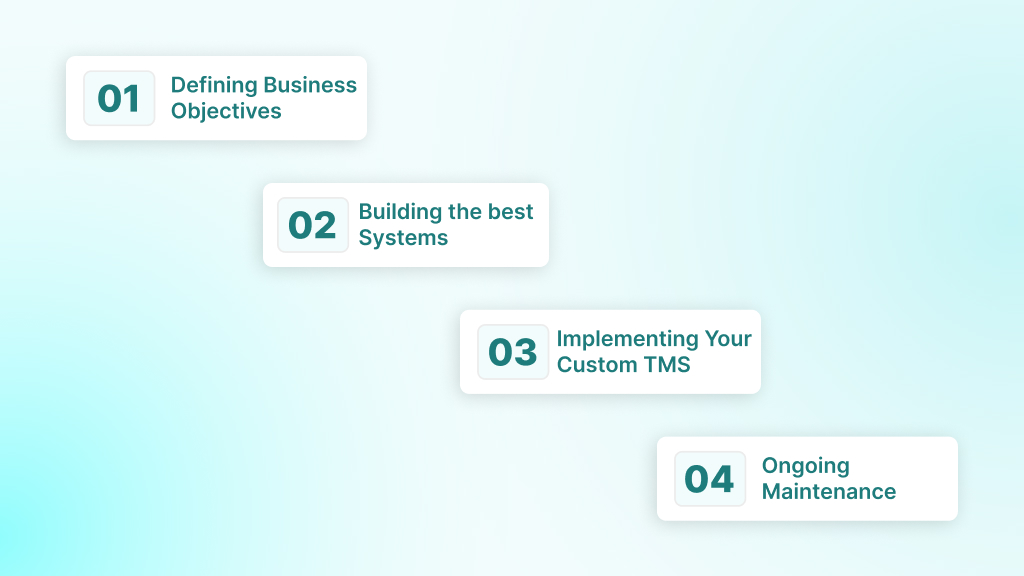
Transportation Management Systems (TMS) play a crucial role in managing a business’s logistics and transportation operations. Having a custom TMS can make a world of difference. A custom TMS solution is specifically tailored to the unique requirements of your business, ensuring efficiency, compliance, scalability, and long-term growth.
Now, let us examine how to build a custom TMS, its implementation process, and how to ensure its ongoing success through continuous optimization and maintenance.
1. Defining Your Business Objectives and Logistics Needs
The foundation of a successful custom TMS starts with a deep understanding of your business goals and logistics needs. Whether you are focused on cost optimization, customer satisfaction, or global scalability, your TMS should be designed to meet these objectives efficiently.
A) Identifying Pain Points
Before building your TMS, it is essential to assess your current logistics operations and identify the pain points that need to be addressed. Some common pain points include:
- Shipping delays due to poor route planning.
- Lack of visibility into real-time shipment tracking.
- High transportation costs are due to inefficient carrier management.
For example, with a custom TMS, you can automate route optimization, eliminate manual tracking, and manage carrier relationships more effectively.
B) Aligning TMS with Business Goals
Your TMS needs to be in perfect alignment with your overarching business strategy. If your goal is to reduce operational costs, transport management system features such as route optimization, carrier management, and automated billing will be crucial.
Similarly, if you are expanding into new markets, your TMS should be scalable and capable of handling multi-region support, different currencies, and local regulatory compliance.
Having a clear understanding of your logistics goals ensures that your TMS will be developed in line with your overall business objectives.
C) Establishing Key Performance Indicators (KPIs)
To track the success of your custom TMS, it is essential to establish clear KPIs that reflect your logistics goals. Some common KPIs include:
- On-time delivery rates: This tracks the percentage of deliveries made within the promised timeframe.
- Cost per shipment: This measures the cost-effectiveness of your logistics operations.
- Carrier performance: This tracks the efficiency and reliability of the carriers you use.
Setting these KPIs upfront will help you measure the impact of your TMS on your logistics operations and ensure it meets your performance expectations.
2. Building the Best Transportation Management Systems
Once your business objectives are clearly defined, the next step is building your custom TMS solution. This involves selecting the right transport management system features, integrating with existing systems, and developing the software to meet your unique logistics needs.
A) Design and Development
Building a custom TMS begins with the design phase:
- Feature Selection: Identify the key features that align with your business objectives. This may include real-time tracking, route optimization, carrier management, or freight cost calculation.
- System Architecture: Ensure the system is designed for scalability and flexibility to support future growth and adaptability. It should grow in line with your business.
- User Interface: The interface must be user-friendly for logistics managers, IT teams, and non-technical stakeholders.
At DEVtrust, we work closely with your team to design the best transportation management systems that fit seamlessly with your existing workflows and logistics operations.
B) Integration with Existing Systems
Your custom TMS must integrate seamlessly with existing systems, such as ERP, CRM, and WMS, to ensure end-to-end operations are smooth and efficient. This integration allows your business to:
- Synchronize data across all systems to improve operational efficiency.
- Automate workflows and reduce manual data entry.
- Maintain real-time visibility across the supply chain.
A custom-built TMS ensures that all your systems work together seamlessly.
C) Data Migration and Testing
Transferring data from legacy systems into the new custom TMS is a critical step. During this phase:
- Ensure that your data is migrated accurately and without loss or corruption.
- Conduct thorough testing to ensure the TMS works as expected. This includes unit testing, system testing, and load testing to simulate real-world conditions.
- Implement rigorous testing protocols to ensure your custom TMS performs seamlessly before going live.
3. Implementing Your Custom TMS: Go-Live and Training
Once your custom TMS has been developed and tested, it is time to deploy it and ensure your team is well-prepared to use it effectively.
A) Deployment Process
During the go-live phase, we work with your team to deploy the custom TMS into your operations. This includes:
- Monitoring the system during the early stages of deployment to identify any issues or glitches.
- Providing real-time support during the go-live phase to ensure everything runs smoothly.
B) Training Internal Teams
A crucial part of the implementation process is training your internal teams to use the new system. You should provide:
- Comprehensive training sessions for logistics teams, IT staff, and other stakeholders to ensure they understand how to use the system effectively.
- Documentation that helps users navigate the system and understand its features.
- Training your team on how to use the custom TMS ensures that your system is utilized to its full potential, improving operational efficiency from day one.
4. Ongoing Maintenance and Optimization
Building and deploying your custom TMS is just the beginning. To ensure long-term success, regularly maintain and optimize your system to ensure its continued effectiveness. Here is how you should approach this:
A) Continuous Monitoring
Provide continuous system monitoring to track performance and identify potential issues early on. Key elements to monitor include:
- System Performance: Detecting slowdowns or bugs in the system.
- Data Accuracy: Ensuring that the data used for decision-making is accurate and up to date.
B) Software Updates and Feature Enhancements
As logistics operations evolve, so should your TMS. You should:
- Regularly update your software to ensure your TMS stays relevant with new transport management system features, functionalities, and technology advancements.
- Enhance features based on user feedback to ensure your TMS continues to meet your evolving needs.
At Devtrust, our goal is to ensure that your custom TMS remains cutting-edge, helping your business maintain its competitive edge.
Building a Future-Proof Custom TMS with DEVtrust
Building, implementing, and maintaining the best transportation management systems is an investment that yields significant long-term benefits. A custom solution tailored to your business needs ensures efficiency, scalability, and regulatory compliance, all while driving cost savings and improving customer satisfaction.
At DEVtrust, we specialize in creating custom TMS solutions tailored to meet your unique business needs. We work closely with your team to understand your specific requirements and deliver a bespoke system that enhances operational efficiency and supports future growth.
To demonstrate how our custom solutions can transform your business, let us take a look at a recent success story:
Case Study: Draydex – Revolutionizing Rate Management in the Freight Industry
DEVtrust partnered with Draydex to overhaul its legacy rate management system. Draydex, led by Bob Mayo, sought to enhance its Freight Management operations. They wanted to modernize the rate management process for improved efficiency, enhanced data accessibility, and seamless integration with third-party tools. Together, we developed a robust digital platform that streamlined operations and improved user experience.
Challenges
- Outdated Software: The existing system, which was 20 years old, led to inefficiencies and a subpar user experience.
- Data Migration: Migrating a large volume of data from the old system proved challenging.
- Rate Management: The lack of real-time data affected rate transaction accuracy and efficiency.
- Third-Party Integrations: Integrating with modern services, such as Mapbox and payment gateways, was complex.
Solutions
- Instant Pricing: We introduced instant drayage pricing, allowing users to get immediate rate quotes.
- Rate Management System: Developed a paid and free system for effortless rate comparison.
- Real-Time Data & Historical Tracking: Integrated real-time data with historical tracking for improved decision-making.
- Third-Party Integrations: Integrated Mapbox for accurate location data and Stripe for secure payments.
Impact & Achievements
- Reduced Wait Times: Transaction efficiency improved by 35%.
- User Satisfaction: Simplified rate comparison led to a 25% increase in user satisfaction.
- Accuracy: Payment errors decreased by 20% thanks to the integration of tools.
- Reporting: Data reliability improved by 30% through enhanced reporting features.
- User Experience: Optimized user interface resulted in a 40% decrease in user complaints.
Case Study: Moveit4U – Enhancing Transportation Management
Moveit4U, an Australia-based Transportation Management System (TMS), partnered with DEVtrust to resolve issues with its underperforming platform. Initially facing challenges with an incomplete codebase and a lack of automation, our team helped salvage and optimize the system.
Challenges
- Incomplete Data: Previous developers left an inefficient and incomplete codebase.
- Lack of Automation: There was no automation for job creation, slowing operations.
- Missing Integration: The system lacked integration with carriers, resulting in a lack of real-time updates.
Solutions
- Codebase Fixes: We thoroughly reviewed and optimized the inherited code, restoring functionality.
- Job Management: Automated job creation for seamless operations and status updates from carriers.
- Carrier API Integration: Integrated with the “BOND” system for real-time carrier status updates.
Impact & Achievements
- Operational Efficiency: Reduced administrative efforts by 50% through automation.
- User Satisfaction: Design improvements increased user satisfaction by 40%.
- Revenue Optimization: Stripe integration improved timely payments by 25%.
- Performance: The platform handled a 45% surge in user activity without performance issues.
- Security: Strong security protocols ensured zero data breaches, fostering trust among users.
Ready to build a custom TMS solution that works for your business? Contact DEVtrust today to get started on optimizing your logistics operations.
Why Custom TMS Solutions are the Future of Logistics
Effective transportation management systems are crucial for businesses seeking to remain competitive. A custom TMS solution tailored to your specific needs can help you optimize routes, enhance real-time tracking, improve carrier management, and ensure seamless integration with existing systems.
By investing in the best transportation management systems that evolve with your business, you will unlock greater efficiency, reduce costs, and deliver an exceptional customer experience. Do not let outdated logistics slow you down; transform your operations with the right TMS solution today.
Ready to take your logistics to the next level? Contact us now to build your custom TMS!
Best Transportation Management Systems for Streamlined Logistics
Discover the best transportation management systems for 2025. Compare key features, user experience, and integration capabilities. Click now to choose the right TMS!
Contact Us
